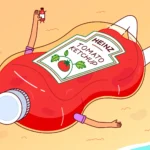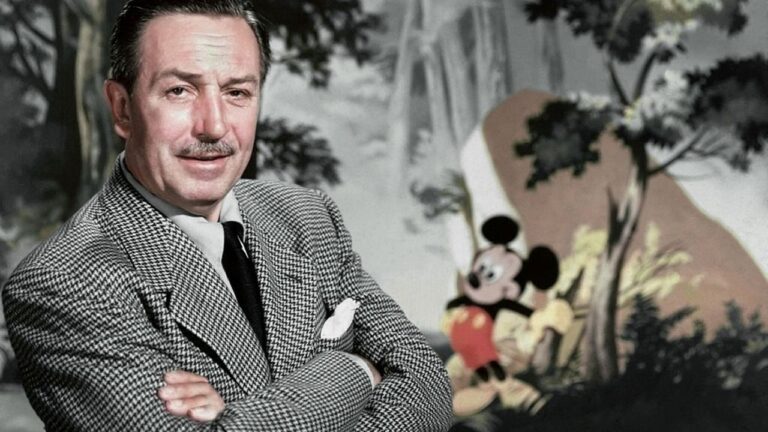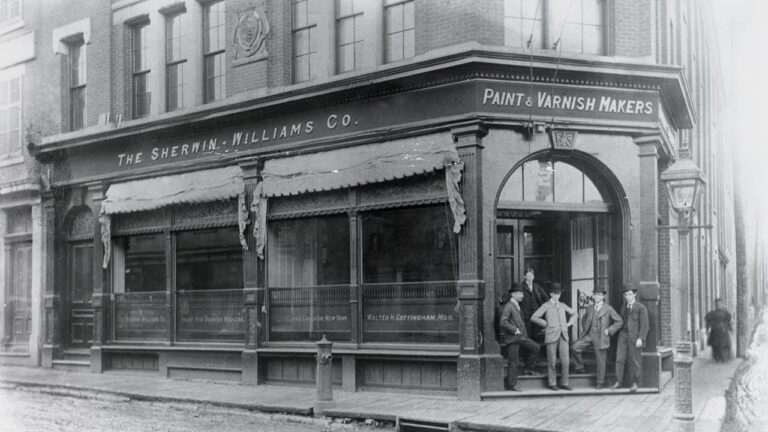Post Cereal History: A Crunchy Chronicle
Delving into the rich history of Post Cereal, a brand that has left an indelible mark on the breakfast industry. From its inception to its evolution, the journey of this cereal giant is nothing short of inspiring.
Here are some key points chronicling the captivating course of Post Cereal history:
- The Inception of Cereal: All started in 1863, forming the basis of modern breakfast habits.
- Postum Cereal Company Emergence: Marked the formal beginning of Post’s cereal journey.
- Grape-Nuts Cereal Introduction: This iconic product stands as a testament to Post’s innovative spirit.
- Bagged Cereal Packaging Shift: In 1966, Post altered the way we purchase cereal.
- Morris the Cat: The memorable 9Lives Spokescat added a touch of charm to Post’s branding.
- Marjorie Post’s Leadership: A pioneer leading changes and unprecedented growth in the company.
- Birth of Post Foods: A new entity was created, marking a significant milestone in Post history.
- Aquisitions by Post Holdings: Progressive expansions and acquisitions shaped Post’s current stature.
The narrative of Post Cereal history does not just tell the story of a brand, but also mirrors the evolution of the cereal industry itself.
A Look at Post Cereal’s Legendary Journey
In more than a century of existence, Post Cereal has played an integral role in shaping our morning routines.
From introducing Bagged Cereal Packaging to establishing separate entities like Post Foods and Post Holdings, the brand has consistently led the industry trends.
Through characters like Morris the Cat and pioneers like Marjorie Post, it has successfully engraved its legacy in the hearts of millions.
Contents
The Inception of Cereal: 1863

The advent of breakfast cereal in the United States was a remarkable innovation.
It began as a digestive aid and, over time, transformed into an iconic part of American breakfast culture.
- Mid to Late 19th Century:Health enthusiasts James Caleb Jackson and John Harvey Kellogg crafted the early versions of cereal.
- 1900s:The Kellogg brothers introduced sweetened Corn Flakes and C.W. Post launched Grape-Nuts, marking the inception of popular breakfast cereals.
- 1910s:Puffed Rice and Puffed Wheat, products of The Quaker Oats Company, brought revolutionary changes to the industry.
- 1920s:This era saw the birth of Wheaties and Rice Krispies, both resulting from kitchen innovations.
- 1930s:Ralston Purina introduced Shredded Ralston, an early form of Wheat Chex, catering to niche audiences.
In the 1940s, Cheerios came into existence, marking a significant milestone in this food category’s evolution.
Cheerios quickly became a top-selling cereal, paving the way for subsequent variations like Honey Nut Cheerios.
- 1950s:Frosted Flakes capitalized on the post-World War II boom, introducing marketing revolution with new advertising characters like Tony the Tiger.
- 1960s:This period witnessed the entry of quirky characters like Quisp and Cap’n Crunch that captured consumers’ imaginations.
- 1970s:This decade saw the rise of fruit-flavored and monster-themed cereals, reflecting marketing trends towards child-oriented products.
- 1980s:Co-branded cereals featuring characters like Mr. T and California Raisins gained popularity.
The 1990s marked a significant shift towards healthier cereals, catering to health-conscious consumers.
Organic options gained traction as parents sought more nutritious choices for their children.
- 2000s:The focus intensified on natural and organic cereals, with brands like Kashi and Nature’s Path EnviroKidz stepping up to meet the demand.
This progression shows the ongoing evolution of breakfast cereal, aligning with changing consumer preferences over time.
Birth of the Postum Cereal Company

In the heated cereal competition, the Postum Cereal Company emerged as a challenger. Your mornings probably would be bland without their innovation.
The Founding Vision
C.W. Post, the founder, had a radical vision. His mission: to introduce a healthy, appetizing breakfast choice that would revolutionize your morning mealtime.
First Steps into Market
Initially, their production line was limited. However, dedicated to deliver value, the company embarked on its quest with an unyielding spirit.
Their commitment was to deliver nutritious, palate-pleasing cereals that would alter your perception of breakfast foods forever.
Perseverance Pays Off
Despite facing strong market competition, their tenacity never waned. They held on to their belief – every consumer deserves a wholesome start every day.
Postum’s Rise and Expansion
Their continuous efforts rewarded them with acceptance and preference among consumers. Postum’s production line expanded, providing more options to explore for your morning meals.
Introduction of Iconic Grape-Nuts Cereal
![]()
Grape-Nuts, the iconic cereal, is neither made of grapes nor nuts. Instead, its origin story reveals it’s crafted from wheat and barley.
The name ‘Grape-Nuts’ conjured due to two popular theories. One suggests that the inventor, Mr. Post, associated the glucose formed during baking with ‘grape sugar’.
This idea, coupled with the cereal’s nutty taste, supposedly led to its unique name. The second theory posits that the cereal’s resemblance to grape seeds or ‘grape nuts’ inspired its moniker.
- Grape-Nuts’ Heritage: Created by C.W. Post in 1897, Grape-Nuts has been delighting palates for over a century. It offers nutritional prowess that appeals to contemporary lifestyles.
- Versatile usage: This cereal isn’t just a breakfast staple. Its wholesome ingredients make it a surprising addition in several healthy recipes.
Not confined to the kitchen, Grape-Nuts has also played a vital role in history and pop culture.
In 1933, it sponsored Sir Admiral Byrd’s expedition to Antarctica leading to the first two-way radio transmission. Astronauts on an important mission or even trekkers reaching Mount Everest relied on Grape-Nuts for nutritious energy.
In another fascinating event, Post sponsored a TV series promoting Grape-Nuts which indirectly led to the creation of an all-American cultural icon – The Andy Griffith Show.
Due to its natural composition and health benefits, Grape-Nuts became a popular choice among health-conscious individuals during the ‘return to nature’ movement in the 60s and 70s.
Indeed, Grape-Nuts is not just a cereal; it’s an essential part of American history!
Shift to Bagged Cereal Packaging: 1966

You might not realize that in 1966, Post Cereal made a bold move. With the introduction of instant oatmeal by Quaker, they had to adapt quickly.
Post then shifted from traditional packaged oats. They took a leap of faith towards a more user-friendly breakfast alternative. Convenience was the key.
- Savings: Bagged cereals were economically beneficial, reducing packaging costs significantly.
- Environmentally Friendly: Use of plastic bags reduced the reliance on larger, more wasteful cereal boxes.
- User Convenience: The new packaging was easy-to-open and maintain, enhancing overall customer satisfaction.
- Food Preservation: The sealed bags ensured the cereal stayed fresh for longer periods.
This trendsetters move by Post wasn’t just about staying competitive either. It was also about offering value to everyday consumers.
You can dig deeper into this fascinating aspect of Post’s history by visiting Smithsonian Magazine.
This strategic shift catapulted Post to a novel position in the cereal market, ensuring their products remained popular among consumers.
Funny enough, although it happened decades ago, its impact is still felt today. It reshaped how consumers perceive and interact with their breakfast choices.
Morris the Cat: The 9Lives Spokescat

Who was Morris the Cat?
Morris the Cat, made famous by 9Lives commercials, originated as an orange tabby discovered at a Humane Society in Hinsdale, Illinois.
With about 80% of all tabby cats being male, Morris followed this trend. Highly sociable, he became a star.
What happened to the original Morris the Cat?
The first Morris lived an impressive 17 years before succumbing to a heart attack. His final resting place is in a suburban area of Chicago.
How many Morris the Cats have there been?
Since the original Morris, there have been two more orange tabbies stepping into his role. They’ve continued his legacy with unwavering dedication.
What is Morris the Cat’s political history?
Morris added politician to his resume, running humorous presidential campaigns in 1988 and 1992. In 2012, Stubbs the Cat was his chosen running mate.
What does the current Morris do?
The modern-day Morris resides in Los Angeles with his handler Rosie Ordile. The tradition of using orange tabbies for continuity with the brand remains intact.
Morris continues to campaign for animal welfare rights and responsible pet ownership globally.
Has Morris appeared on film?
Beyond commercials, Morris has ventured into movies such as *The Long Goodbye* and *Shamus*, sharing screen time with renowned actors like Elliot Gould and Burt Reynolds.
Pioneering Change: Marjorie Post’s Leadership

Marjorie Merriweather Post, the only offspring of C.W. Post, ascended into the world of business leadership at a tender age of 27.
Post inherited the Postum Cereal Company, marking her rise as one of America’s foremost female business leaders.
The Trailblazer’s Journey
Marjorie displayed natural business prowess from an early age.
As a young girl attending board meetings with her father, she absorbed invaluable lessons in leadership.
Revolutionizing the Industry
She made significant strides in growing the company, taking it public in 1922.
Sure-footed decisions led to successful acquisitions including Jell-O, Maxwell House Coffee, Sanka and Birdseye Frozen Foods.
In 1929, the company changed its name to General Foods and emerged as one of America’s largest food corporations under Marjorie’s stewardship.
A Woman of Heart
Beyond being a business leader, Marjorie was known for her commitment to social responsibility and philanthropy.
She supported various causes and esteemed organizations like the American Red Cross and Salvation Army with open arms.
A Leader Remembered
Marjorie Merriweather Post left an indelible mark not just in the cereal industry but also in the annals of American history.
Her forward-thinking leadership and unwavering commitments continue to inspire today’s generation.
Progression to Post Foods: A Separate Entity

Post Cereal underwent a significant transformation, evolving into Post Foods. This change marked its growing independence from traditional business models and practices.
Similar to how companies like Amazon revolutionized the retail sector, Post Foods innovated within the food industry. Leveraging online platforms allowed for streamlined operations and reduced operational costs, enabling competitive pricing strategies.
This shift mirrors Amazon’s successful disruption of retail. Amazon’s low-cost model undermined many traditional retailers, ultimately leading to their decline. Similarly, Post Foods’ online transition enabled it to survive in an increasingly digital market.
This table outlines the key milestones in Post Foods’ progression toward becoming a separate entity.The company utilized strategic online tactics to maintain a competitive edge, mimicking Amazon’s digital model. This resulted in lower overhead costs and competitive pricing, similar to Amazon’s dominance in e-commerce.Post Foods’ transition from traditional retail mirrors the wider shift in the retail industry. The influence and impact of industry disruptors like Amazon cannot be understated in this context.The change has not only influenced the company’s market share but also its relevance within today’s digital-first consumer environment. Just as Amazon’s employment practices have come under scrutiny, discussions around corporate responsibility are increasingly prominent within the food industry. This includes wage practices, benefits, and job security for employees.In conclusion, Post Foods’ progression towards becoming a separate entity has seen it adapt elements from successful digital companies like Amazon. Post Holdings and Its Acquisitions.
Post Holdings, a renowned name in the consumer food industry, hails from the U.S., and its HQ nestles in St. Louis.Under the leadership of CEO Robert V. Vitale, this public company operates with an official website: https://www.postholdings.com.The stock ticker symbol for Post Holdings is POST, hinting at their grasp in the financial market.As per fiscal year data ending Sept. 30, 2023, Post Holdings boasted impressive revenues of $6,991 million.However, they recorded profits of $301 million, signifying a considerable decrease by 60.2% compared to previous years.Despite this downfall, the company’s market value stood strong at $6,449 million.The efficient workforce of 11,430 employees contributes significantly to the company’s operation success.Looking into profit ratios reveals a profit margin of 4.3%, Return on Assets (ROA) of 2.6%, and Return on Equity (ROE) of 7.8%.Earnings Per Share (EPS) were noted as $4.82, with a decrement of around 60.1% from the preceding fiscal year.However, the EPS saw a 32% ten-year annualized rate despite a negative five-year annualized rate of -4.8%.The total return offered to investors varied over different periods: negative last year (-2.4%), positive over five years (7.7%), and uplifting over ten years (10.1%).The journey of Post Holdings continues as we monitor its rank in Fortune’s list for the year 2024 and beyond.Chronicle CrunchFrom humble beginnings, Post Cereal emerged as a juggernaut in the breakfast food industry. This fascinating chronicle traces its growth, detailing how it has consistently innovated and adapted to consumer trends. With an unrelenting commitment to quality, Post Cereal continues to redefine the breakfast experience for millions across the globe.
| Date | Event | Outcome |
|---|---|---|
| 2007 | Formation of Post Foods | Became a separate entity from parent company Kraft |
| 2012 | Launch of eCommerce platform | Increased product accessibility and sales |
| 2014 | Diversification of product line | Expanded customer base and market presence |
| 2016 | Ramp up of online marketing efforts | Increased brand visibility and recognition |
| 2020 | Digitalization of supply chain | Optimized operations and reduced costs |
| Source: Post Foods corporate history archives | ||










